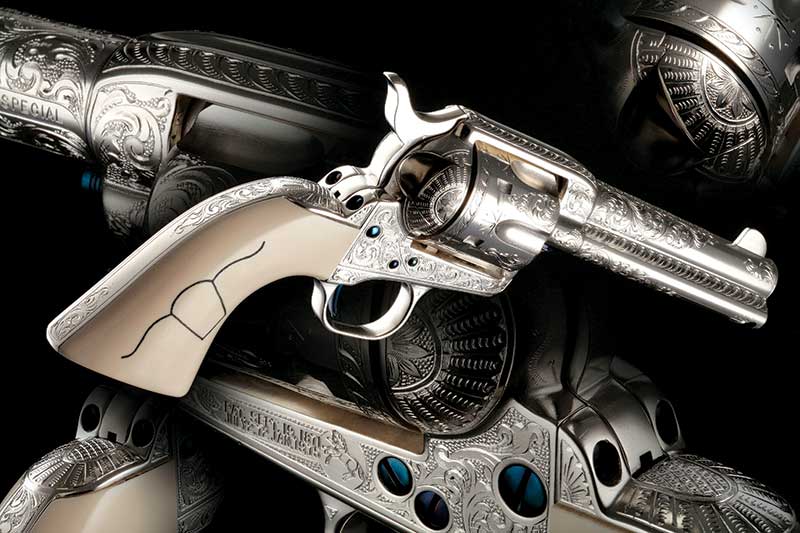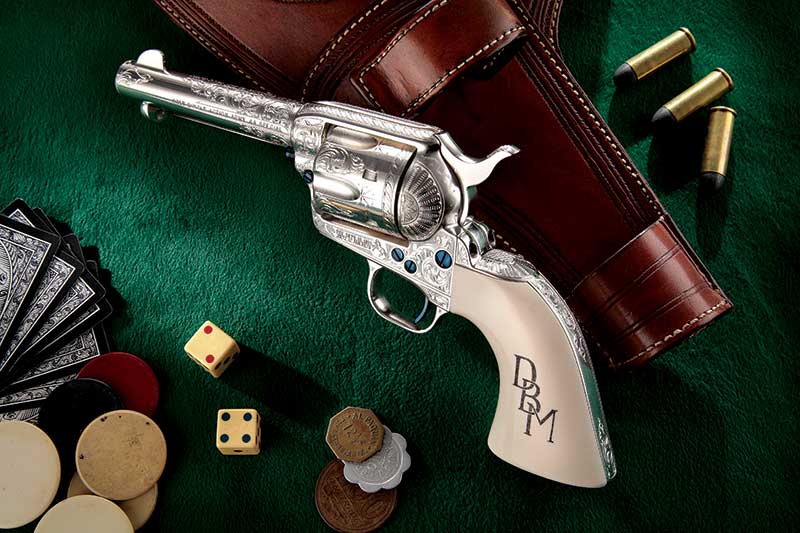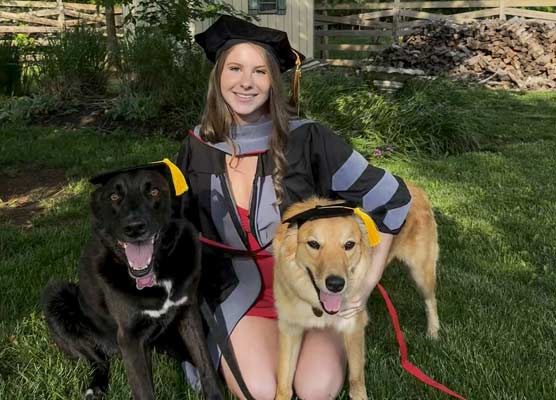An Heirloom Colt
140-Year Old Style
The elements of style can be mystifying. Just as there are billions of people in the world, we might safely say there are billions of ideas of what “style” might be. What makes a certain hemline suddenly out, when it was de riguer only six months earlier? Why is the avocado green shag carpet, which seemed so cutting-edge in 1968, appallingly out of place today? What gives style legs, makes it cross-over boundaries, cause people to take notice and, in short — last?
Books have been written about this and I’m still not sure anyone knows for sure. Frank Lloyd Wright seems to have nailed something in his designs that is almost universally appealing. The uncluttered, simple but often complicated lines of his work seem to restore a sense of calm and peace. Tiffany is renowned for their design excellence and again, they too seem to have often captured a sense of timelessness. So what gives? Why can’t we make up a list and say do this, or that and it will be stylish?
Nonetheless, some people do get it and oddly enough, Colonel Colt was one of them. How’s that, you say? From the first design that saw the light of day, Colt’s single action revolvers have basically owned the title of the revolver. While there have certainly been copies over the decades, to many, unless it is a Colt, it … um … isn’t.
The Colonel struck a chord with the form and function of the early revolvers and the embodiment of his style, if you will, has to be the 1873 revolver. Many have attempted to copy it in the form of highly functional revolvers (think: Remington patterns, or a host of others), yet, what remains today is the originator, the elegant namesake to everything single action today.
And again — but why?
I think, you only have to look to know. And, perhaps I’m tasked with the impossible here, to put into words what we all know in our guts, what we all feel inside, what we know is, but can’t quite exactly describe. But we are saved, as there is one fellow who knows exactly what we’re talking about and can make it happen, virtually at will. Well, with a little help from Colt too.
Customizing Colts
Eddie Janis, who, as his card says, is “Proprietor” of Peacemaker Specialists, is that man. I’ve known Eddie for more than a decade, and his ready smile and soft-spoken confidence bespeaks of his work. In his hands (which frustratingly look the same as yours or mine … ) a Colt in need of magic gets just that. Eddie is one of those rare people who we in the gun business seem to get to meet regularly if we keep our eyes open. He has a talent for creating beauty out of wood, steel and ivory. There’s no CNC work in Eddie’s shop, just one man at his bench.
I asked him to tell me about a stunning example of his art he had completed recently. Eddie enjoys taking a customer’s “fixer” and turning it into a family heirloom. The Third Generation Colt in our pictures (while not a “fixer”) has been the recipient of some of Peacemaker Specialists’ most demanding custom work. Yet, the original is still there, still calls out, and the heart of the Colt still beats there. The task is to enhance and capture the soul of a SAA — without losing anything in the process. A tough job at best, and all-too-man, lose the original in the process.
The Project
Eddie said it’s always important to make sure the gun “runs” like it should before any further work is performed. “I did our Gunslinger Action Job on this gun before we moved forward with restoration and final finish work,” explained Eddie. “I make sure to maintain 100-percent reliability, but the action runs like it’s on ball-bearings and all the springs are hand-made. I guarantee the action for the life of the original owner or I fix it for free.” I have a Colt with Eddie’s action job. Whenever I hand it to someone who knows Colts they cock it — and think it’s broken. “That’s how it is? It’s that light and smooth? It actually works? Honest?” are all questions I get regularly. And yes, it actually works.
Before things got further along, pre-ban ivory one-piece stocks were carefully fitted and formed to match the fit and feel of pre-war Colt walnut stocks. They were then scrimshawed with the client’s initials and his ranch’s cattle brand. The magic started.
“The 1880s Cowboy Shooter’s Package for 3rd Generation guns includes both cosmetic and ergonomic enhancements,” said Eddie. “The cylinder gets re-fluted and beveled along with the ejector tube, which both looks better and removes sharp edges that can cut a leather holster. Beveling the heel and toe of the grip dehorns the handle of the Colt, allowing more comfort during long shooting sessions. And, it looks more like early frontier Colts.” And he’s right. About all of it.
To optimize the accuracy of this .44 Special, Eddie re-fitted the cylinder tightly to eliminate end-shake, while still maintaining smooth rotation. He then re-cut the forcing cone to 11-degrees to improve accuracy and to help with lead bullets. This eases the bullet’s transition into the rifling.
Eddie can also re-mark the top barrel address with a two-line address as on the pre-war guns, adding the “45 Colt” moniker to the left side of the barrel, if the caliber on the customer’s gun is appropriate. Not necessary on this .44 Special though. At this point, the client’s gun was send to master engraver John Adams who applied turn-of-the-century correct “Helfright-style” engraving. It was then silver-plated for that elegant, warm look only genuine silver can bestow on a gun.
The crowning touch? I think it’s the installation of the fire-blued screws and appointments, such as the base pin, base pin latch and trigger. As near perfection in a SAA as a human hand can create perhaps?
Shoot It?
Absolutely. The last step in this agreeable transformation is to sight the gun in using the exact load the client will be shooting. Eddie personally test fires the gun and regulates the load to hit where the sights look. How convenient is that, having a gun actually shoot where you aim it?
In this age of polymer frames and stamped-out clones, at times it’s good to simply sit back and enjoy something that’s … well … not one of those. Just as we gaze longingly at 1936 Packard V-12s in the pages of our favorite car magazine, so we gaze just as longingly at this equivalent delight. But the key difference is you just might have a tired old Colt sitting in a drawer, while not many of us have a tired old Packard in the garage waiting to be restored.
Think about it. It can happen. Oh, and say hi to Eddie from us, if you would?
For more info: (805) 238-9100







